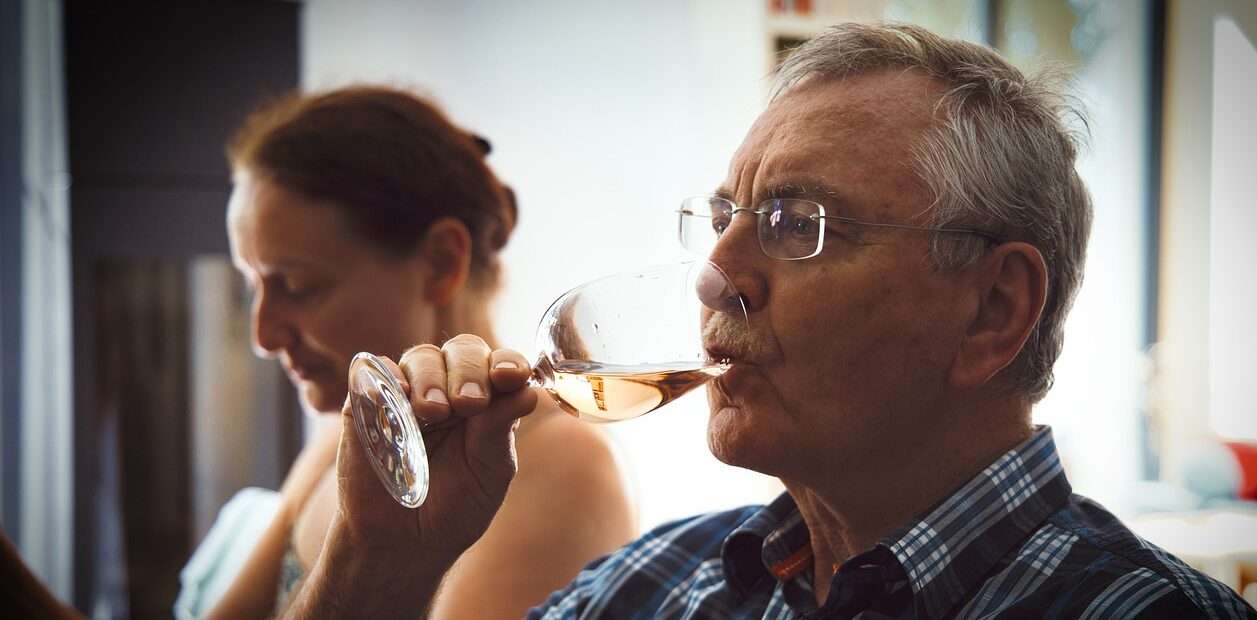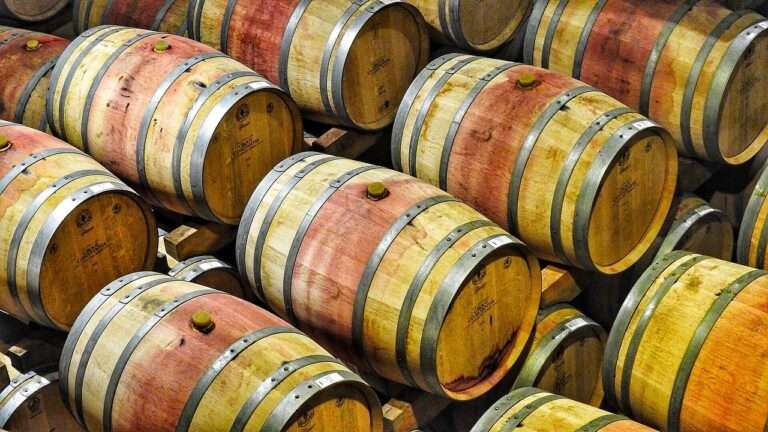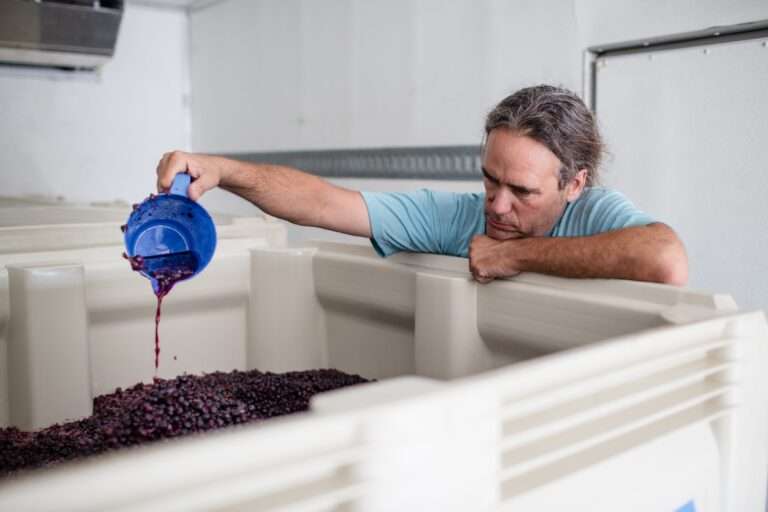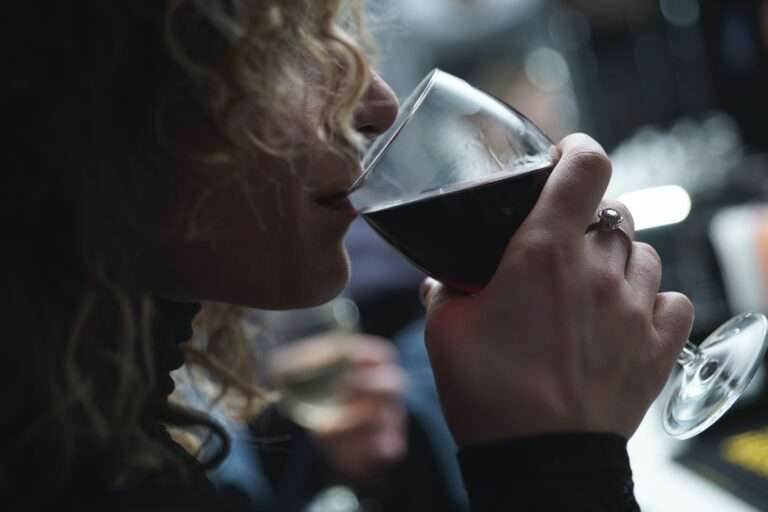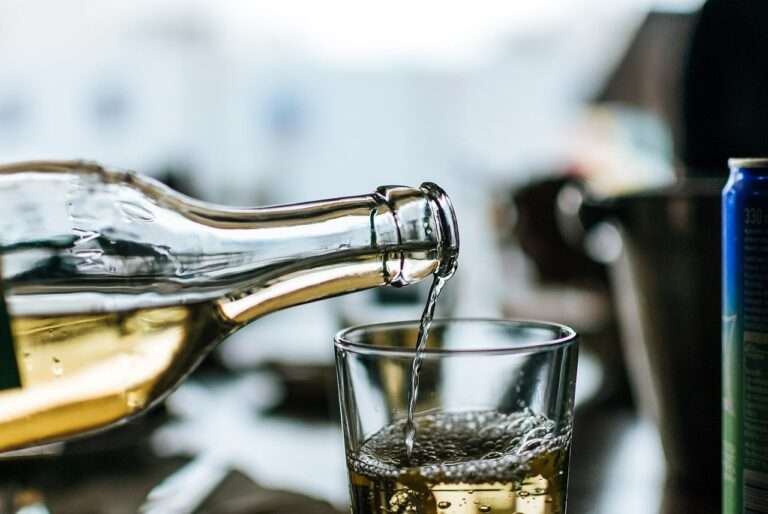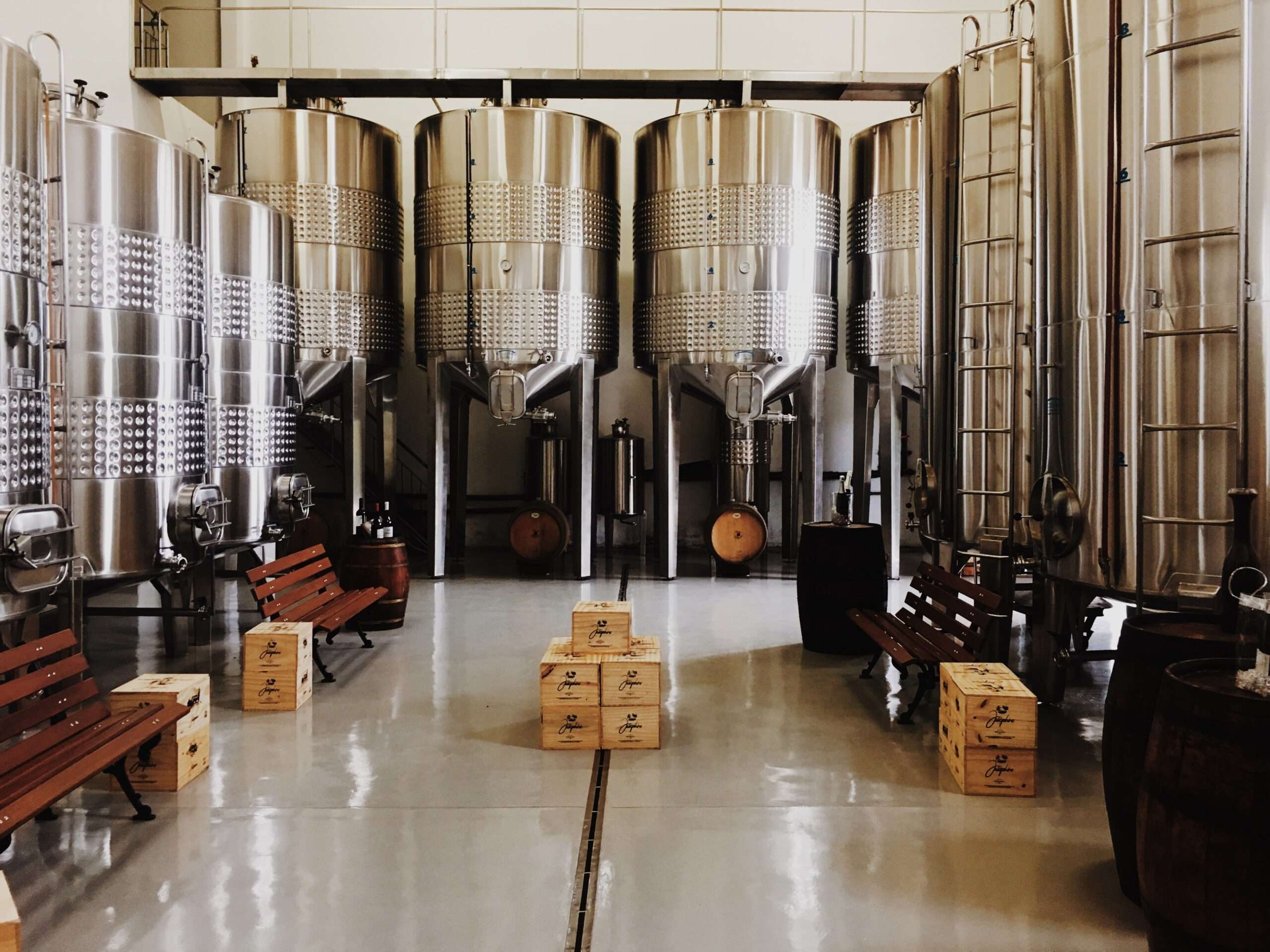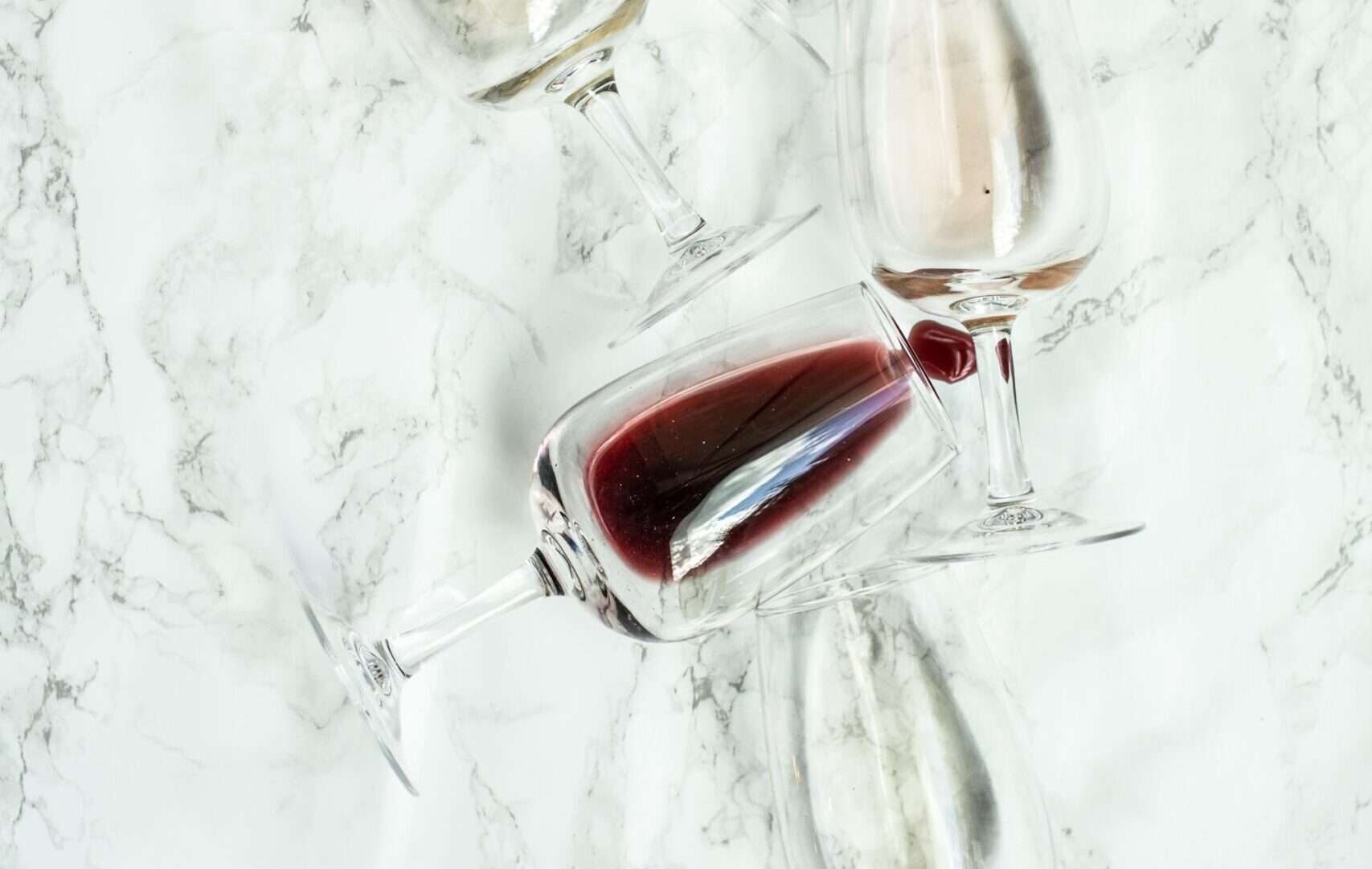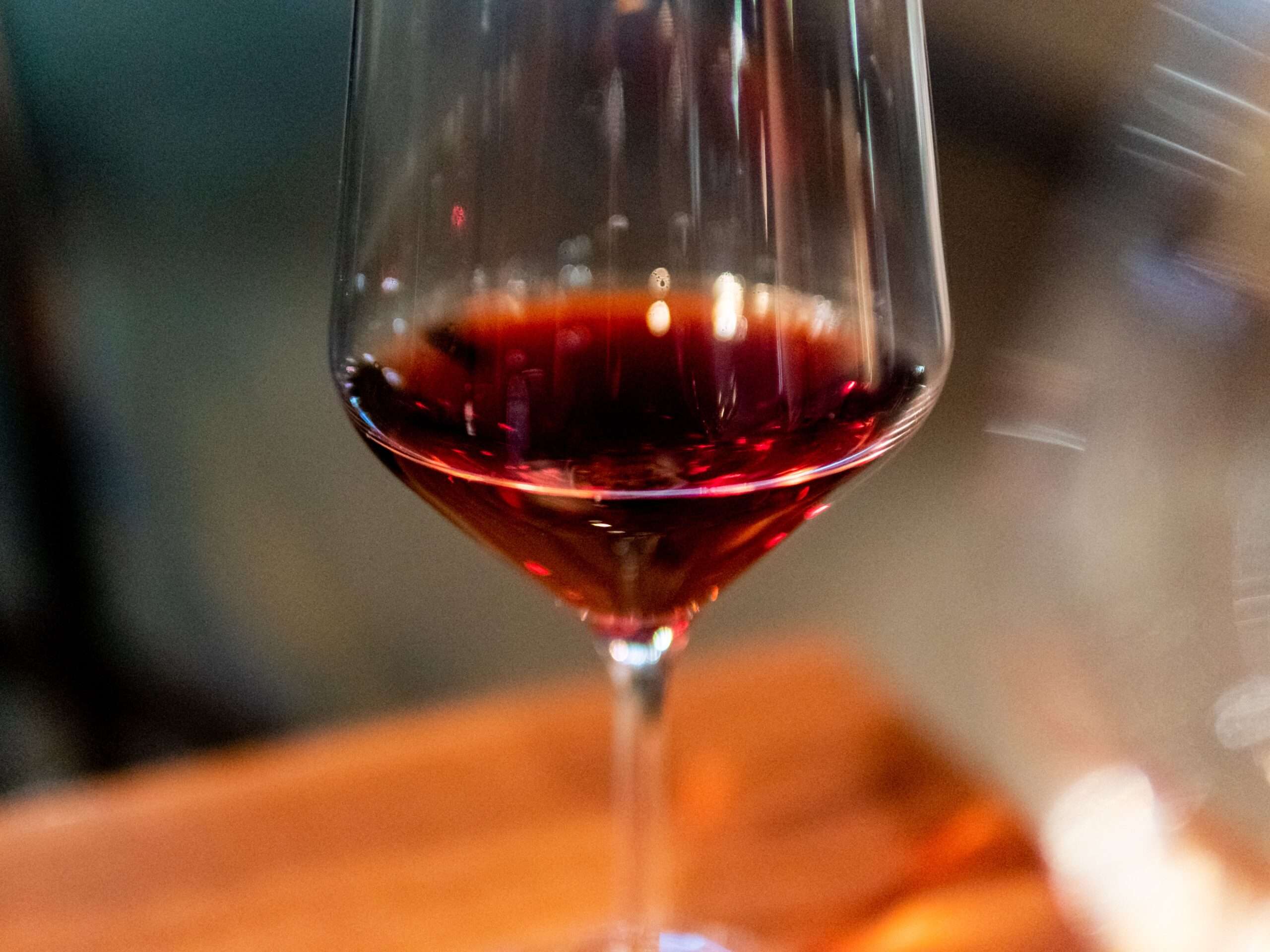There is an underlying contingency of wine drinkers who can’t distinguish between a Merlot and Cabernet or Chardonnay from Champagne. Wine is a vintage yet classic beverage that can be utterly overwhelming for new and old wine drinkers alike. You’ll be surprised to learn that this drink made from the humble grape offers an astonishing array of flavors thanks to chemistry, but what does the wine taste like?
The taste of wine ultimately depends on the ratio between five main characteristics, including sweetness, acidity, tannin, alcohol, and body. Red wine mostly has rich, bold, tannin, and dark fruity flavors. In contrast, white wine offers light, tart, and crisp citrus flavors.
While wine sommeliers undergo years of training, the average person won’t come close to receiving a formal class on tasting wine (the right way). So, we’ve compiled this article to help you explore and experience wine the way its creator intended.
What Does Wine Taste Like?
Each wine offers a signature taste, revealing itself sequentially while your tongue detects the flavors and your brain registers them.
We can broadly break down wine into five main categories:
- Red wines: Red wines are generally defined by tannins, oak aging, and dark fruity flavors like plums, blackcurrants, pomegranate, and cherries.
- White wines: White wines are typically more tart and refreshing than red wines. They also flaunt aromatic notes of flowers, citrus, or orchard fruits.
- Rosé wines: Rosé resembles the flavors of light, red wine, but with more floral and crisper notes of red fruits, including strawberries, raspberries, and cherries.
- Sparkling wines: Sparkling wines or champagnes are creamy and toasty, while prosecco is light and fruity. Typical flavors of sparkling wine include citrus, apple, nuts, vanilla, or toasty.
- Fortified wines: Fortified wines are diverse, ranging from dry to sweet, delicate or syrupy, and everything in between!
Did you know that 98% of wine comprises two tasteless ingredients ¾water and alcohol? Therefore wine’s authenticity stems from the remaining 2% of volatile flavors, aromas, tannins, pigment compounds, acids, sugars, and the exquisite craft of winemaking.
How is it possible for a drink made almost entirely from grapes to have such an astonishing array of flavors? Well, chemistry!
The final 2% of the grape consists of thousands of trace amounts of chemicals that contribute to each wine variety’s individuality, giving the wine its unique flavor, color, and aroma. This critical 2% is affected by the grape variety, the soil and climate, maturation, harvest time, processing methods, fermentation, and storage.
Over 10,000 wine grape varieties produce unique flavors, aromas, and textures while hosting different yeast types that affect the fermentation process.
Additionally, cool-climate wines generally offer a more subtle flavor. The grapes take longer to ripen, resulting in lower natural sugar and wines with hints of tarty flavors like cherries, raspberries, or currants. Warmer climates have more robust wines as the grapes have higher sugar and alcohol content, bringing out dominant flavors like plum, blackberry, pepper, and chocolate.
5 Aspects Of Tasting Wine
While accomplished sommeliers can determine a wine’s grape and region from a single taste, you do not have to have such a skilled palette to distinguish between your unique preferences.
Understanding the five fundamental characteristics of wine will set you on the path for a lifetime of tasting enjoyment.
These characteristics include:
1. Sweetness
2. Acidity
3. Tannin
4. Alcohol
5. Body
1. The Sweetness Of Wine
Sweetness: wines with detectable sugar contents in the mouth and nose.
The perception of sweetness begins at the tips of our tongues; therefore, our first impression of the wine is sweetness.
The sweetness of wine refers to the amount of residual sugar left in the wine after its creation. Although pretty obvious, a sweet wine contains a higher residual sugar level, while a dry wine has lesser sugars as they are all converted to alcohol during fermentation.
How To Taste The Sweetness In Wine:
To taste the sweetness in the wine, try to focus your attention on taste buds at the tip of your tongue are your taste buds tingling? If so, it’s the first way to identify the sweetness of the wine.
Then, sweet wines typically have a high viscosity, meaning that the wine slowly tears down the side of the glass.
2. The Acidity Of Wine
Acidity: the liveliness or crispness in wine stimulating our salivary glands.
The acidity of the wine is often confused with a high alcohol concentration; however, the wine’s acidity is what lends it its sharpness.
High acidity wines taste tart and zesty. They may also feel lighter-bodied as they come across as crisp and brisk. So, if you prefer a well-rounded or richer wine, it’s best to choose wine with less acidity.
How To Taste The Acidity In Wine:
You can identify acidity in wine by the tingling sensation on the side of your tongue. More so, your tongue may feel rough or gravelly if you rub it to the roof of your mouth.
Your mouth can also feel extra wet; you might even gleek.
3. The Tannin Of Wine
Tannin: the phenolic compound in wines that leave a bitter, dry, or puckery feeling in the mouth.
A wine high in tannin is most commonly mistaken as a dry wine due to the mouth-drying effects of tannin.
Wine tannins are phenolic compounds (found in seeds and skins of grapes) that add the famous bitter profile to wine. However, tannins also add balance, complexity, and structure to the wine, preserving it longer.
How To Taste The Tannin In Wine:
Tannins make your mouth feel dry while leaving a lingering bitter taste in your mouth. It is also described as astringent and herbaceous.
4. The Alcohol Of Wine
Alcohol levels significantly impact wine’s character, body, and classification.
The average glass of wine contains between 11 to 13% alcohol by volume. However, wines can have as little as 5.5% or 20%.
How To Taste The Alcohol In Wine:
Alcohol: the ethanol product of fermenting sugars by yeast
We all interpret alcohol differently ¾ bitter, oily, sweet, spicy, and sometimes, everything at once, depending on our taste receptors and genetics.
Regardless, we all sense alcohol towards the back of the mouth and throat as a warming sensation.
Higher alcohol wines generally taste bolder and oilier, whereas lower alcohol wines taste lighter-bodied.
5. The Body Of Wine
Body: a tactile sensation that describes the weight and fullness of wine in the mouth.
The body of a wine is a generalized term, resulting from various factors like the grape variety, vintage, region, maturity, and alcohol level. You could say that the body is a snapshot of the overall impression of wine and not the taste registry on your tongue.
Some wines seem fuller or heavier in your mouth than others, falling into light-bodied, medium-bodied, and full-bodied categories.
Light-bodied wines pair well with lighter dishes, while rich foods call for a full-bodied wine.
Understanding Red Wine
Red wines are made from dark-skinned grape varieties. The longer the skins are left during processing grapes into wine, the deeper red the wine becomes.
Red wines are mostly consumed at room temperature paired with a hearty entrée, red meat, and chocolate.
Red wine enthusiasts often disagree on their viewpoint of red wine flavors. This occurs because each person perceives tannins differently, and their palate differs. However, a quality red wine should have a balanced profile of sweet, bitter, and sour elements. Depending on the variety, some wines may even have a hint of spiciness.
Many wineries age their red wine in new oak barrels to soften the tannin structure and add flavors and aromas of sweet spices, cocoa, and vanilla to the wine. However, the flavors and aromas vary depending on the aging method and red grape varieties.
The fruity flavors in red wines include:
- Red fruit: raspberry, strawberry, red cherry, pomegranate, and cranberry
- Black fruit: black cherry, plum, blackberry, and blackcurrant
- Blue fruit: blueberry
Red Wine Terms
Have you ever listened to a wine connoisseur describing their favorite red wine? You’ll most likely hear terms like dry, semi-sweet, full-bodied, or tannin ¾ what do these terms mean, and do they affect the taste of the red wine?
Let’s find out.
Tannin
Tannin refers to the chemical compound naturally present in grape skins and responsible for wine’s bitterness and mouth-drying qualities. Since all red wines are fermented with their skins, they have higher tannin levels than white wines. Wines with higher tannin levels are more acidic, bitter, and leave your mouth feeling dry.
Light-bodied
The term “light-bodied” refers to red wines with light and crisp taste and hits of fruity flavors. These “gateway” red wines are ideal for pairing light meals or lunches.
Medium-bodied
“Medium-bodied” refers to slightly heavier red wines than light-bodied red wines. These red wines are not too bold and not too light either; they showcase delicious fruity flavors and a hint of tannins.
Full-bodied
“Full-bodied” wines refer to red wines with a more complex and dry taste. They have the highest tannins, are also considered bitter or acidic, and generally aren’t ideal for beginners.
Understanding White Wine
White wine is made from green grapes, where the grape skins are carefully removed from the must before the fermentation process begins, creating a yellow-green or yellow-gold color.
The aroma and acid structure are essential in white wines as they lack the tannins of red wines.
White wines are also famous for their food-friendly properties as the crisp and tanginess perfectly balance your dinner’s salty or fat flavors.
While every second wine specialist thinks it’s an excellent idea to start a wine-drinking experience with high-quality white wine, this is because whites are gentler on the palate.
Many white wines have natural stone fruit aromas like apple, pear, nectarine, peach, apricot, floral and herbaceous flavors.
White wines are more likely aged in stainless steel barrels to maintain their fresh aromatics. However, oak barrels can add aromas and flavors of caramel, vanilla, and spices to white wines.
White Wine Terms
You’ll most likely hear the terms sweet, semi-sweet, and dry when chatting to a wine drinker about their glass of white wine.
These three terms refer to a sweetness level or residual sugar content in wine.
Sweet White Wine
White wine with high residual sugar levels is sweet white wine. They often lend sweet, apple, lemon, tangerine, pear, and melon flavors.
Semi-Sweet White Wine
White wines with residual sugar levels above 3% are considered semi-sweet wines. These medium wines exhibit flavors like peach, jasmine, and orange blossoms.
Dry White Wine
Dry white wines are fermented longer than sweet and semi-sweet white wines. This extended fermentation process removes the natural, residual sugar in the wine, resulting in high alcohol content and lack of sweetness.
Dry white wines have an oaky, tart, and lively citrus flavors, ideal for cooking.
How To Taste And Develop A Palate For Wine?
While some people are born with sharp taste buds, “supertasters,” and experience different flavors with heightened intensity, it takes time and persistence for most of us to develop our palate, the relationship between our taste buds and olfactory sense.
Once you pass the wine vocabulary sommeliers’ jargon, there are various routines and methods worth trying to help improve your palate. After training your palate to detect nuances, you’ll be shocked at how differently you perceive wine.
Sipping wine is like music there are loud and soft notes, and every person’s taste is unique, making “good” and “bad” music completely subjective.
The goal is to develop a wine history, primarily for your palette to build on, but be prepared to use most of your senses.
Here’s how to taste wine:
- If you’re new to drinking wine, we recommend enjoying the experiment and easing into the process. Start with a light wine and slowly work your way to an intense, full-bodied red wine. This will prevent your palette from getting fatigued.
- Note that most newer red wines will benefit from decanting, opening the bottles ahead of time, and pouring the wine into a container to separate the bottom sediments. Decanting also aerates the wine, releasing more of the flavor and aroma.
- Visualize the wine’s appearance, clarity, depth, color, and hue under natural light.
- Swirl the wine to increase the surface area, naturally aerating it and releasing a full blow of its aromas. Place the wine glass on the table, pinching it between the thumb, pointer, and middle finger around the glass stem, and swirl it around in a circle. While mixing the wine, get a sense of the wine’s “leg” or viscosity. Heavy-bodied wines will have more pronounced legs crawling down the glass.
- Next, get your nose involved! Smelling the wine allows your brain to separate the wine’s aromas into distinct parts. Take the time to smell the fruity, floral, spicy, herbaceous, oak notes in the wine. Your olfactory system directly ties to memory, so creating memories help identify the smells and flavors of wine later on.
- Primary Aromas: grape-derivative aromas, including fruity, floral, earthy, or herbaceous notes.
- Secondary Aromas: derived from the winemaking process, including yeasty aromas like nut husk, cheese rind, or stale beer.
- Tertiary Aromas: comes from the aging process, including savory notes like baking spices, old tobacco, vanilla, cured leather, oak, cedar, and coconut.
- Now, for the best part, take a small sip of the wine and swirl it in your mouth, ensuring it glides over every part of your tongue.
- Profile the wine into a suitable category by describing its sweetness, acidity, and tannin levels. You can also note your initial impressions (earthy, fruity, woody, spicy, etc.).
Tips And Tricks For Wine Tasting
Here’s our advice (from personal experience) on enjoying a wine tasting to the fullest measure.
- Dress for the event: Consider wearing dark colors to hide the unexpected spills better and avoid dangling sleeves that will cause the dreaded spillage!
- Avoid wearing fragrance: Our olfactory plays a significant part in tasting wine, and skipping the quirt of perfume will remarkably heighten the wine’s aromas and nuances.
- Eat something: Remember to nibble on something beforehand and drink water between wines to prevent getting drunk too quickly and to cleanse your palate while staying hydrated between tastings.
- Spit (at least most of the rounds): Yes, we know the wines taste delicious, but those yummy tasting portions add up and quickly! For an enjoyable, memorable experience, we recommend spitting wine as you taste them (as unglamorous as it may seem).
- Take notes: We all made the mistake of swearing we’d remember the name of the mouth-watering red from Italy. After a couple of dozen wines, you’ll struggle to recall which wine you preferred, let alone forget what each tasted like several days later.
- Have fun!
Conclusion
While it’s true that every sort of wine won’t be your cup of tea, at least owe it to your palate and sensory system to experiment with various variants.
As you have fun progressing with your wine tasting experience, you’ll soon be an expert at finding your ideal match.

